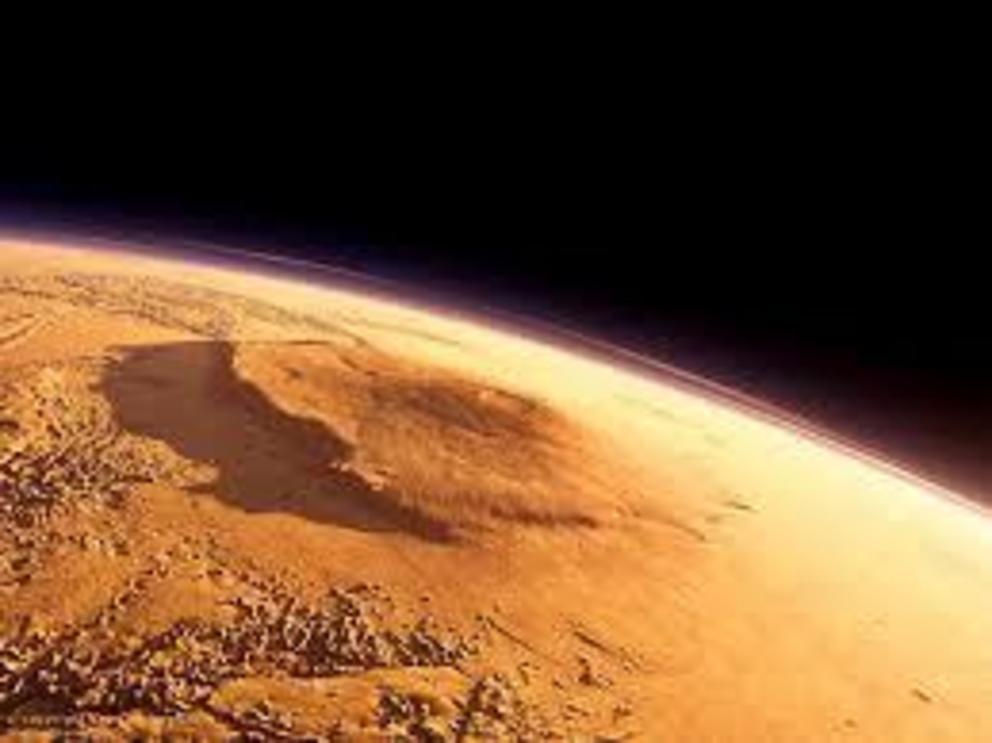An ancient meteorite is the first chemical evidence of volcanic convection on Mars
For many years, we thought Mars was dead. A dusty, dry, barren planet, where nothing moves but the howling wind. Recently, however, pieces of evidence have started to emerge, hinting that Mars is both volcanically and geologically active.
Well, the idea of a volcanically active Mars just got a little more real. A meteorite that formed deep within the belly of Mars has just provided the first solid chemical proof of magma convection within the Martian mantle, scientists say.
Crystals of olivine in the Tissint meteorite that fell to Earth in 2011 could only have formed in changing temperatures as it was rapidly swirled about in magma convection currents - showing that the planet was volcanically active when the crystals formed around 574 to 582 million years ago - and it could still be intermittently so today.
"There was no previous evidence of convection on Mars, but the question 'Is Mars a still volcanically active planet?' was previously investigated using different methods," explained planetary geologist Nicola Mari of the University of Glasgow to ScienceAlert.
"However, this is the first study that proves activity in the Mars interior from a purely chemical point of view, on real Martian samples."
Olivine, a magnesium iron silicate, isn't rare. It crystallises from cooling magma, and it's very common in Earth's mantle; in fact, the olivine group dominates Earth's mantle, usually as part of a rock mass. On Earth's surface, it's found in igneous rock.
It's fairly common in meteorites. And olivine is also fairly common on Mars. In fact, the presence of olivine on the surface of Mars has previously been taken as evidence of the planet's dryness, since the mineral weathers rapidly in the presence of water.
But when Mari and his team started studying the olivine crystals in the Tissint meteorite to try to understand the magma chamber where it formed, they noticed something strange. The crystals had irregularly spaced phosphorus-rich bands.
We know of this phenomenon on Earth - it's a process called solute trapping. But it was a surprise to find it on Mars.
"This occurs when the rate of crystal growth exceeds the rate at which phosphorus can diffuse through the melt, thus the phosphorus is obliged to enter the crystal structure instead of 'swimming' in the liquid magma," Mari said.
"In the magma chamber that generated the lava that I studied, the convection was so vigorous that the olivines were moved from the bottom of the chamber (hotter) to the top (cooler) very rapidly - to be precise, this likely generated cooling rates of 15-30 degrees Celsius per hour for the olivines."
The larger of the olivine crystals were also revealing. Traces of nickel and cobalt are in agreement with previous findings that they originated from deep under the Martian crust, a depth of 40 to 80 kilometres (25 to 50 miles).
This supplied the pressure at which they formed; along with the equilibration temperature of olivine, the team could now perform thermodynamic calculations to discover the temperature in the mantle at which the crystals formed.
They found that the Martian mantle probably had a temperature of around 1,560 degrees Celsius in the Martian Late Amazonian period when the olivine formed. This is very close to the ambient mantle temperature of Earth of 1,650 degrees Celsius during the Archean Eon, 4 to 2.5 billion years ago.
That doesn't mean Mars is just like an early Earth. But it does mean that Mars could have retained quite a bit of heat under its mantle; it's thought that, because it lacks the plate tectonics that help to dissipate heat on Earth, Mars may cool more slowly.
"I really think that Mars could be a still volcanically active world today, and these new results point toward this," Mari told ScienceAlert.
"We may not see a volcanic eruption on Mars for the next 5 million years, but this doesn't mean that the planet is inactive. It could just mean that the timing between eruptions between Mars and Earth is different, and instead of seeing one or more eruptions per day (as on Earth) we could see a Martian eruption every n-millions of years."
We'll need more research to confidently say this hypothesis checks out. But these results also mean that previous interpretations of the planet's dryness based on surface olivine may need to be revisited. (Although let us be clear, Mars is still extremely dry.)
The ongoing NASA InSight mission that recently found evidence of Marsquakes, measures - among other things - the heat flux from the Martian crust. If Mars is still volcanically active, we may know more about it really soon.
The research has been published in Meteoritics & Planetary Science.
For the rest of this article please go to source link below.

